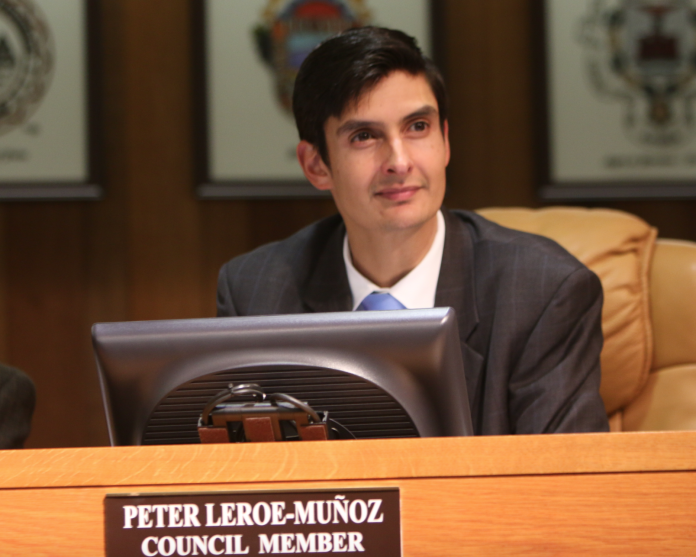The Gilroy City Council on Monday voted to join a new county energy agency that plans to cut greenhouse gas emissions by getting power from renewable sources.
The council voted 5-2 to join Silicon Valley Community Choice Energy (CCE) and spend $150,000 for startup costs of the joint power authority that will find alternative energy sources.
“This is a good idea because it provides consumers a choice,” said Councilmember Dan Harney. “It should bring down rates by 5 percent. It provides Gilroy with a tool to offset greenhouse gas emissions. Third, it includes us in the Silicon Valley efforts for green stewardship. By not offering a green choice, it may discourage businesses from coming to Gilroy.”
During discussions, Councilmember Terri Aulman, who voted no, said she had “real concerns” about the initiative, adding, “going green is not a cheaper option.” Aulman was joined by Dion Bracco in voting against joining the new energy partnership.
Similar programs have been launched in Marin and Sonoma Counties and the city of Lancaster. Nearby, the tri-county region of Santa Cruz, Monterey and San Benito counties are considering their own partnership.
Gilroy was the last prospective member of the CCE to sign on. The city joins Sunnyvale, Mountain View, Cupertino, Campbell, Los Altos, Los Altos Hills, Los Gatos, Monte Sereno, Morgan Hill, Saratoga and Santa Clara County in the venture.
In addition to authorizing the monies, the council also selected Councilmember Harney to serve on the CCE’s governing board, responsible for making decisions on energy sourcing and rates. Councilmember Peter Leroe-Muñoz serving as alternate.
The CCE aims to launch by winter 2016-17.
City staff to study UBG initiative
The City Council authorized the city to spend up to $75,000 on a report analyzing the potential impacts to the city resulting from the proposed urban growth boundary initiative led by the citizen’s group Gilroy Growing Smarter.
Gilroy Growing Smarter filed a notice of intent to circulate a petition with the city clerk in February and is expected to begin gathering signatures in support of the initiative, which aims to set a growth boundary around the city, later this week.
Interim city attorney Andy Faber had 15 calendar days from the date of certification, Feb.19, to produce a ballot title and summary for the petitioners. Once the petitioners print that in a legally adjudicated newspaper, they can begin collecting signatures of Gilroy residents.
They need 1,923 signatures—10 percent of Gilroy’s registered voters—for the measure to make the November ballot.
Called a 9212 report, interim City Administrator Ed Tewes explained on Monday that it would not be overly technical and is intended to be informative.
The report could have a variety of different content, added Faber. There could be legal questions addressed, how the initiative relates to the 2020 General Plan and Draft 2040 General Plan. While it did not require an EIR, the council could say it wanted the report to look at more environment effects.
Mayor Perry Woodward said he recommended the report explore the initiative’s potential impacts to schools, prime agricultural land in the south of the city and traffic.
Councilmember Cat Tucker said she worried that if the petitioners did not get enough signatures, the city will have spent money on the report in vain.
Councilmember Daniel Harney called for studying the urban growth boundary initiative in an “unbiased and thoughtful way.”
Tewes said he expects the report to take up to two months to compile, and that it could be drafted while signatures are gathered. The report can be used to inform a council decision on whether or not to adopt the initiative as a new city ordinance or to proceed with an election and use the report to inform Gilroy voters.
If the petitioners are successful in collecting enough certified signatures within the required 180 days to make the November ballot, the council will still need to authorize the expenditure to hold the election.
The cost of adding a measure to the November ballot in Gilroy is $47,708.
Tewes said city funds cannot be spent on campaigning the issue either way, but can be used to put forward a report.
“Providing information and holding meetings is allowed,” he said.
New appointments
The City Council on Monday confirmed Gabriel Gonzalez, 46, as Gilroy’s new city administrator. From 2010-2013, Gonzalez, a Santa Cruz native, was the city manager of Rohnert Park, where he was credited by members of that community’s city council for helping turn the city around when it was on the verge of bankruptcy.
Since July he’s been a management consultant for Management Partners, a national consulting firm.
Former Morgan Hill city manager Ed Tewes, has served Gilroy on an interim basis since September 2015.
Gonzalez will earn a salary of $210,000 a year and a car allowance of $4,200 a year. His first day on the job is March 22.
As part of the meeting’s consent agenda, the council appointed Barbara Voss as the city’s interim finance director. The city is currently recruiting to fill the post most recently held by Christina Turner, who left after nearly 10 years of service to work as the assistant city manager in Morgan Hill.
Voss has been Gilroy’s assistant finance director since 2007. She has been responsible for the City’s financial management systems, as well as supervising the accounting and utility billing sections.
Prior to Gilroy, Voss worked for Calpine Corporation as the manager of financial planning and analysis. She earned her master’s degree in accountancy from San Jose State University.














